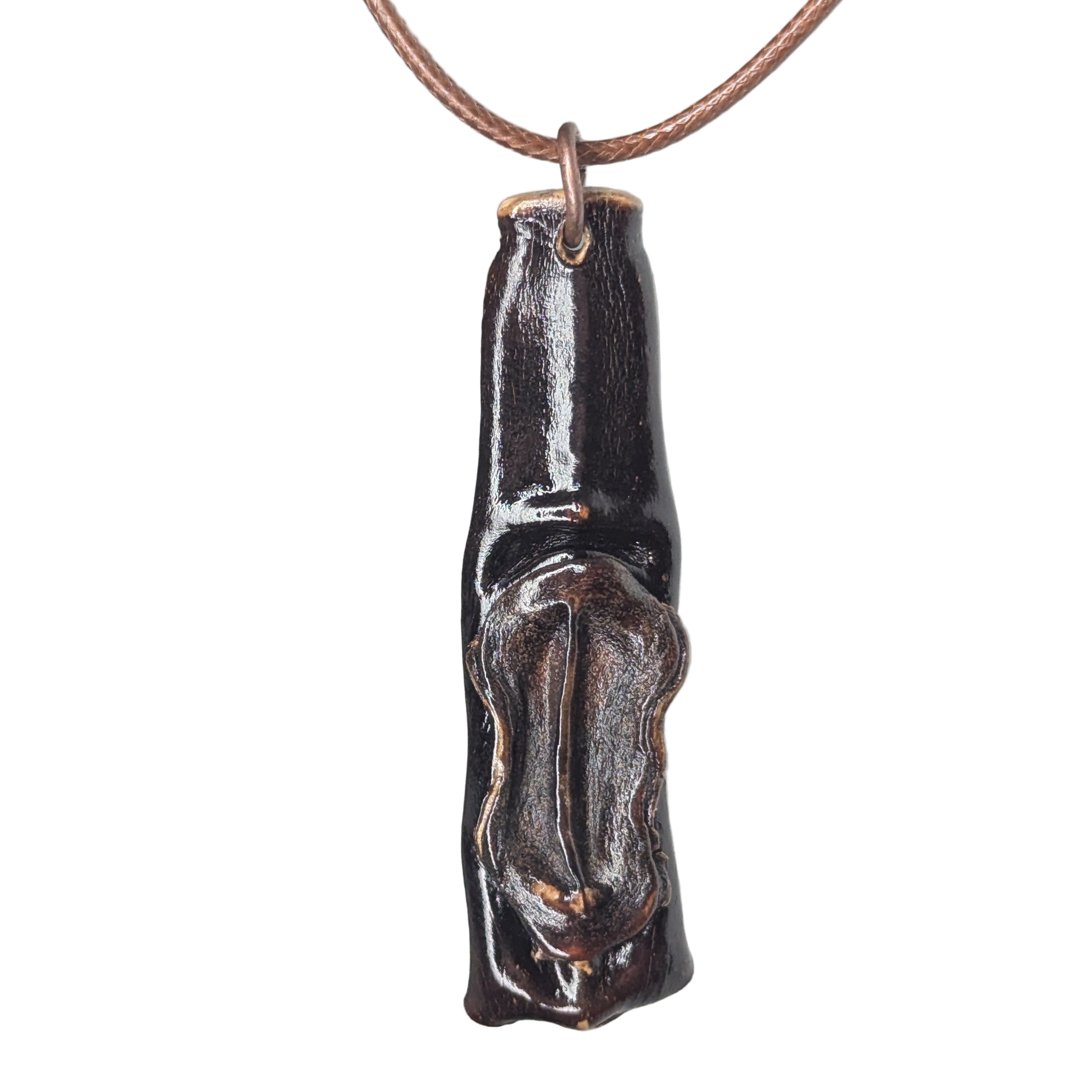Interview
Versiliy | Algae Artifacts
Versiliy is a Los Angeles based jewelry artist who handcrafts artifacts from wild ocean grown Stramenopile algae, a material few have ever worn. Each piece is unrepeatable, created with proprietary techniques he developed to turn raw ocean matter into imperfect luxury.
What is your background and how did you start your journey in the art world?
“I never went to art school. My background was mostly in e-commerce, but I always dreamed about what nature might look like on another planet. When I moved from Saint Petersburg, Russia, to Los Angeles, California, I was completely astonished. Within just a two-hour drive you can see almost every climate zone, from deserts to forests to beaches. Each place has its own cones, seeds, flowers, seaweed, roots, and bark with shapes I had never seen before. They started finding their way into my pockets, and I began combining them into small sculptures, just following curiosity. Algae quickly became my biggest challenge. It refused to stay in the shape I wanted. It was unpredictable, alive, and wild. I couldn’t find any information online or in libraries, because sculpting from algae simply didn’t exist as a field. So I approached it like a discoverer. There are some examples like bull kelp baskets and seaweed pressings, but that covers only a small part of what algae can do artistically. Later, some bugs destroyed my artworks and materials made from land plants, and I took it as a sign to focus only on algae, a material that doesn’t belong to the land at all.”
What inspires you?
“Seeing what turns out and discovering new techniques to transform shape and texture without using glue or ink inspires me the most. I like finding ways to let the material evolve on its own. The ocean also inspires me as a living system that erodes, preserves, and reshapes everything. It covers most of our planet, yet our knowledge of it still barely touches the surface. We know more about the Moon than about the ocean we depend on for life. Imperfection itself is another source of inspiration. The ocean teaches humility because it dissolves human ideas of perfection. Unlike jewelry made from metal or gemstones, I can never create two identical pieces. The material is unpredictable and once alive. I see beauty in the cracks, folds, and textures that no machine could ever reproduce.”
What themes do you pursue? Is there an underlying message in your work?
“Versiliy exists in contrast to what is artificial and mass-produced. Imperfection in my work is not only about the object itself but also about human ideals and cultural expectations. We are taught to polish everything: our image, our lifestyle, our emotions until it fits a perfect mold. Those molds start to feel like mental prisons, and every time we adjust ourselves to fit inside, it’s like filling another cell. Allowing yourself to simply be yourself feels almost rebellious today. That sense of freedom, of breaking the mold, lives inside every piece I create.”
“My art is a reflection of movement — between worlds, between emotions, between what we see and what we sense.”
How would you describe your work?
“I describe my work as artifacts from the ocean, not jewelry in the conventional sense. Each piece is sculptural and tactile, carrying traces of both biology and craftsmanship. Every object is handmade from wild algae and transformed through proprietary techniques and treatments into a stable, wearable form. It is too organic for machines and too rare for molds. That is why each piece feels like something discovered rather than made.”
Which artists influence you most?
“A person usually sees thousands of artists over a lifetime, and each one of them leaves a seed in me. Some of those seeds are already blooming, while others may take years to grow. Just like in the world of algae, where resting spores in diatoms can remain dormant on the seafloor until light and nutrients return, certain artistic influences stay asleep until the right moment. I think of inspiration the same way. It arrives quietly and then suddenly comes to life when the environment is right.”
What is your creative process like?
“It starts with collecting, walking along the coast after storms when the ocean releases its excess. I look for pieces that speak through their shape or texture. Then comes experimentation. I observe how different treatments react and how various approaches change the material. Most of the shaping I do with my hands, but sometimes I have to invent my own tools. I document everything like a scientist, yet I follow intuition like an artist. The process is slow and often unpredictable. Some pieces rot, some smell terrible, and some completely surprise me. That is part of the dialogue with the material.”
What is an artist’s role in society and how do you see that evolving?
“Artists translate what people feel but can’t yet articulate. In a time when everything is optimized and mass-produced, artists remind society that imperfection, mystery, and human touch still matter. I think the artist’s role is shifting from decoration to reconnection, helping people feel something real again, beyond the screen.”
Have you had any noteworthy exhibitions you'd like to share?
“I presented my new necklace collection at the California Seaweed Festival last week, and it truly surprised me. It was not a typical art show. It was a three-day gathering that connected science, sustainability, and art. The program included workshops, networking events, documentary screenings, presentations, and a market where people could experience seaweed in many forms, even as food. What I loved most was the atmosphere. It felt like a living ecosystem of ideas. The festival took place in several locations, including two aquariums, which added something magical. Showing my ocean-born pieces surrounded by living marine life created a sense of dialogue between the artwork and its origin.”


















